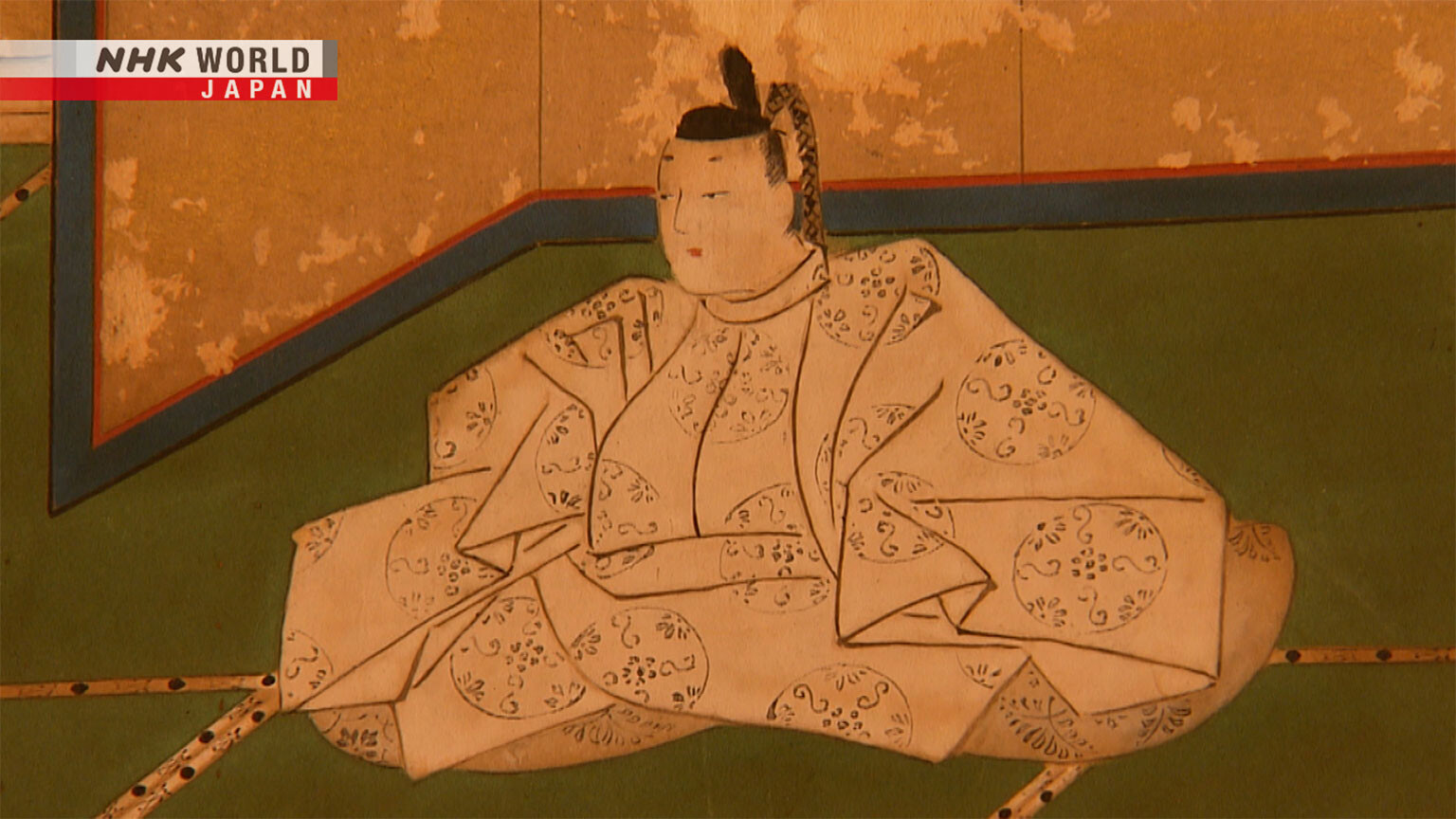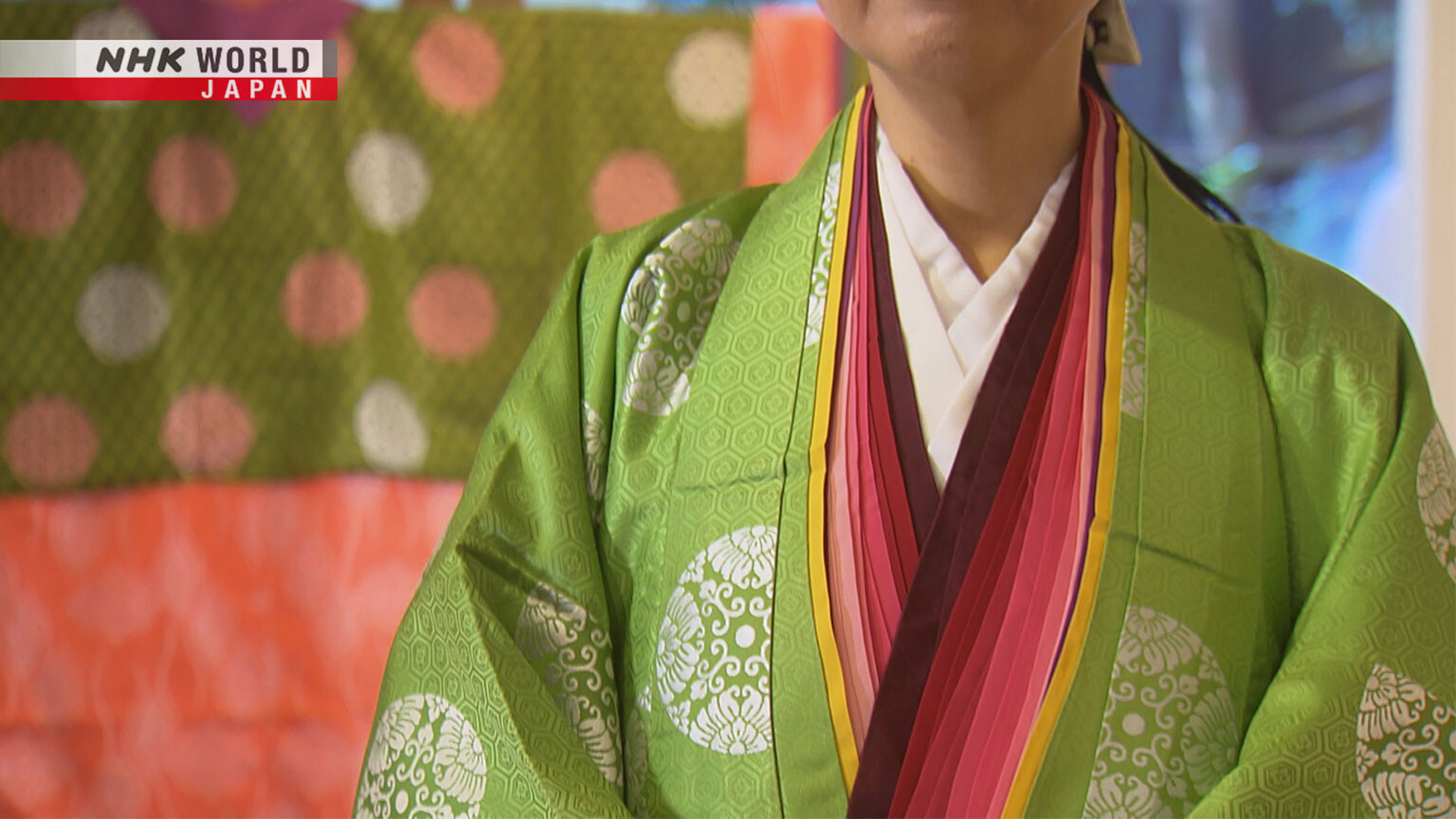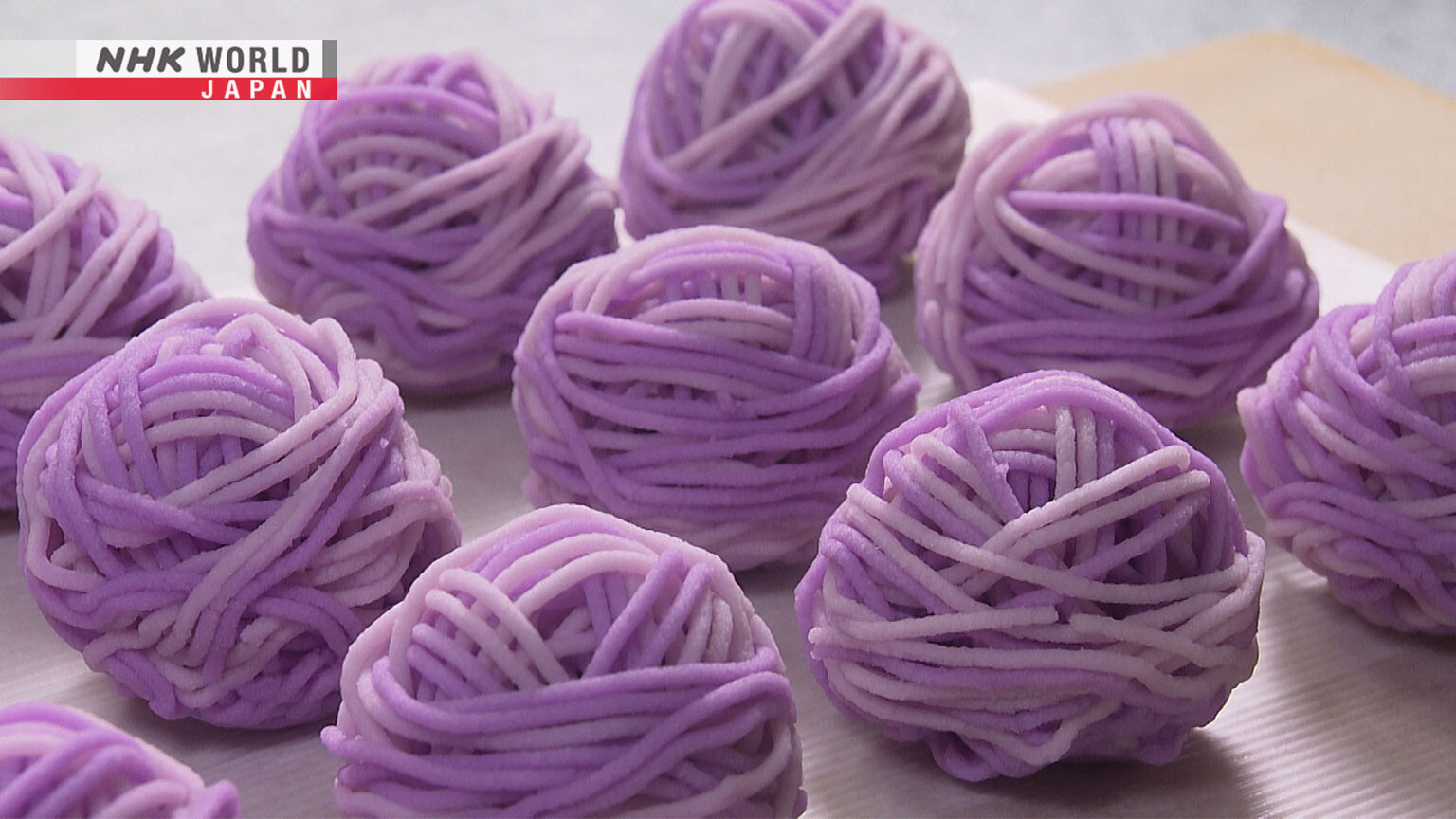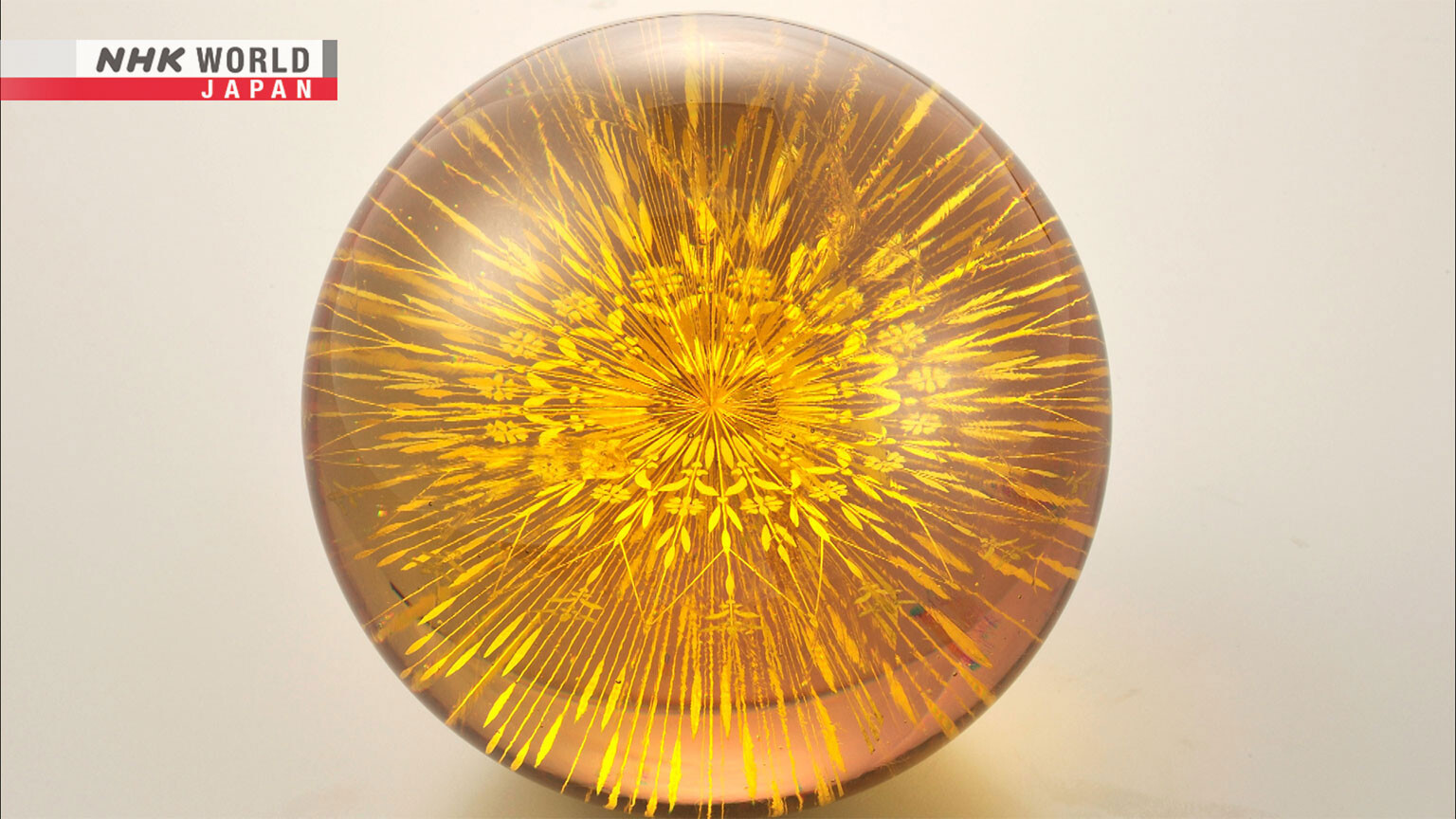The Tale of Genji: Elegance That Transcends the Ages
This 11th-century novel is set in the imperial court. As a work of literature and paintings, it captured people's hearts, profoundly influencing the culture of the ancient capital for a millennium.




Transcript
"The Tale of Genji" was written in the early 11th century during the Heian Period.
Spanning 54 chapters and introducing over 500 characters,
it is referred to as "the pinnacle of Japanese classical literature."
The novel has been translated into more than 30 languages and has many international fans.
The main setting is Heian Kyoto, when the imperial family and aristocrats ruled.
The story describes the lives, loves, and tribulations of the protagonist -
aristocrat Hikaru Genji - and his extended family.
The novel was popular in its written form at the imperial court.
Later, it appeared as illustrated scrolls.
In time, both forms became so famed that the tale influenced society and culture.
This story of 1000 years ago is still being read today.
This shows that people over the centuries were passionate about ensuring the tale lived on.
Some aspects of the Heian Period that the novel depicts survive and are seen in contemporary Kyoto.
The lavish dynastic culture of the times continues to inspire artisans and artists in their work.
Reading that millennium-old novel, I believe human emotions never change.
I don't think there is any other literature as profound as "The Tale of Genji."
Core Kyoto reveals the aesthetics of the ancient capital as shown in "The Tale of Genji."
The center of Kyoto is laid out on a grid pattern.
This harks back to the founding of the capital, called Heian-kyo, in 794.
The Greater Imperial Palace in the north held the emperor's residence and government offices.
Heian-kyo was the main stage for "The Tale of Genji."
Heian society was class based, with the emperor at its apex.
An aristocrat's success rested on family status and marriage.
Rozan-ji stands in what was the eastern corner of Heian-kyo.
This Buddhist temple was founded in the 10th century and moved to its current location in the 16th century.
In fact, the author of "The Tale of Genji" once lived where the temple is now located.
She is known by the name Murasaki Shikibu and was born into an aristocratic family.
Her father was a Chinese scholar and poet.
Murasaki is said to have been intelligent and erudite from her youth.
Murasaki Shikibu's stimulus for writing the novel was -
the death of her husband, Fujiwara no Nobutaka.
She is said to have begun to write, after he died.
Murasaki was lady-in-waiting to the emperor's wife,
and her writings were the start of what would become the epic novel, "The Tale of Genji" -
the original manuscript of which has not survived.
The protagonist Hikaru Genji was born the second son of the emperor.
He was the epitome of the ideal man: handsome, and gifted in the arts and learning.
But circumstances relegated him to a mere aristocrat.
Focusing on Genji's love affairs, the story depicts in detail the careers and culture of the aristocrats.
The 54 chapters of "The Tale of Genji" are divided into three main parts.
The first part recounts the birth of Hikaru Genji and his rise to power.
As he matures, he experiences liaisons with numerous women, tumultuous love-hate relationships, and power struggles.
At age three, Genji loses his mother, the emperor's wife, and has trouble coping with his loss.
Later, when the emperor remarries, Genji falls in love with his stepmother.
The resulting pregnancy is a pivotal event in the story.
In Part Two, after a prosperous life, Genji is cuckolded, and a child is conceived.
In his final years, he feels remorse for his past sins and struggles with the tragedy of his fate.
The third and final part relates the love and anguish of Genji's descendants.
Murasaki Shikibu writes of life's love, lust, jealousy, despair, and death through more than 500 characters.
Murasaki's delicate thoughts are scattered throughout.
Different scenes will stick out for different people depending on the era they live.
I think this is the reason the novel has been loved over the past 1000 years.
Some Kyotoites have made in-depth study of "The Tale of Genji" their purpose in life.
This study group meets monthly to carefully read and understand the novel, one chapter at a time.
Fukushima Shoji, a specialist in Heian literature, teaches the sessions.
He emphasizes the importance of reading between the lines to intuit the characters' thoughts and feelings,
while considering their social status and the historical backdrop.
"The Tale of Genji" is interesting, no matter what part you read.
Every part is meticulous in its description.
The writing reveals the truth in the human heart.
Fukushima can deeply relate to the scene where Genji temporarily leaves the capital after losing a power struggle.
Filled with disappointment, Genji's koto playing is tinged with loneliness.
At that moment, he realizes that his retainers cannot be cheerful if he shows his despondency.
Fukushima feels that the way Genji inspires himself to brighten up is the strength leaders need, even today.
His group meets at a store located on a Gion street lined with antique businesses.
Kaji Hiroko, who was born and raised into this antique-dealing family, hosts the meetings.
As an adult, she became captivated by the entertainment and depth of "The Tale of Genji."
This story of 1000 years ago is still being read today.
This shows that people over the centuries were passionate about ensuring the tale lived on.
The novel is scattered with happenings that could easily occur today.
It's most interesting to think that people don't change.
Kaji sympathizes with the psychological portrayal of a married woman who has a one-night stand with Genji.
Afterwards, Genji continues to make advances,
but she refuses to meet him, due to their different statuses, and flees.
Kaji feels that people's concern about their standing in the world is a constant throughout the ages.
The study group also attracts ardent fans from other prefectures.
With Fukushima's guidance, I was able to empathize with the complexity -
even darkness, of a woman's heart as only Murasaki could write since she was a woman.
Reader engagement is the sign of a good story,
so it is no wonder "The Tale of Genji" has become a classic.
Aspects of Heian-period culture as depicted in "The Tale of Genji" can still be seen in modern Kyoto.
The women's attire in illustrated versions of the novel never cease to be alluring.
The ensemble consisting of multiple layers of vivid kimono is called the "junihitoe."
It is rarely worn today, but one kimono store offers monthly classes in how to wear the Heian attire.
Kumagai Noriko teaches the fitting techniques and deportment required.
The "junihitoe" was worn by high-ranking noble women, who expressed their beauty through layered kimono.
The color combinations were countless and inspired by the colors of nature.
The gradation in this outfit evokes the red plum blossoms of spring.
Looking at the "junihitoe" tones, you can see the beauty of transition.
For example, as a flower bud comes into full bloom -
loses some strength, then falls, each petal changes in color.
Heian nobles incorporated this sense into their daily lives and attire.
It made them feel more lavish. That is the charm of the "junihitoe."
This layering depicts the maple leaves in transition until they drop.
This conjures the Japanese kerria bush, related to the rose.
The tones and colors of the kimono used in the classes,
express the changing seasons and their beauty as depicted in "The Tale of Genji."
Participants learn about the traditional combinations of color through mastering how to don the "junihitoe."
Many attend because they admire the elegant costumes featured in the illustrated versions of the novel.
I love the "junihitoe" so much I bought one. But when I received it -
I realized I didn't know how to wear it, so I immediately signed up for lessons.
I'm mastering the beauty of Japanese origins, so I'm able to enjoy the seasons more.
Kumagai teaches students how to dress others, as well as the related piousness that has existed since the Heian Period.
Basically, those who wore the "junihitoe" and other court attire were of high status -
so the fitters' comportment, consideration of others, and their spirituality, are relevant today.
I try to make sure my lessons do not focus only on technique.
The highest level of respect and decorum was required to dress people of noble standing.
Kumagai believes her students can learn consideration toward others through dressing in "junihitoe."
The scents featured in "The Tale of Genji" can still be enjoyed in contemporary Kyoto.
In this scene, Genji sits before an incense burner.
Heian nobility placed much value on fragrance.
Etiquette dictated that women were to remain out of direct sight by sitting, for example, behind a blind.
Hence, men and women conveyed their individuality using fragrance.
They would apply their personal aesthetic sense to mixing a unique incense.
They would burn it in their rooms and scent their kimono in the hope of attracting the person they desired.
This over-250-year-old aromatic wood store promulgates the Heian culture of fragrance as depicted in the novel.
Back in the day, several ingredients were powdered and kneaded into pastilles.
A burning piece of charcoal would be buried in ash, then a pastille placed on top.
The charcoal's heat would release the fragrance.
Nobles wore a unique fragrance they mixed themselves.
They'd burn the incense in a covered container and scent their clothes -
so they themselves could enjoy the fragrance.
Each aristocrat had his or her own recipe.
That is how widespread the use of fragrance was.
The store allows customers to experience kneading incense, like the Heian nobles did.
They use nine types of natural, aromatic ingredients
that have been pulverized from plants, animals, and shellfish, and blend them to suit their nose.
Lastly, they add syrup and knead them together.
Pastilles are part of Kyoto and Japanese culture -
and we want to spread that as wide as we can.
The custom is still practiced - and we want to keep it alive.
"The Tale of Genji" is a constant source of inspiration for culture in Kyoto.
Kaji Hiroko arranges for matcha and traditional confections to be served at the study sessions she hosts.
She specially orders the confections each month, and participants look forward to them.
We read each chapter in order -
so I arrange for sweets to match the chapter of the day.
Kaji consults with the confectioner to decide on a suitable sweet.
Takaya Hironori was born into a confectionery family that has been in the business since 1882.
He now runs his own confectionery store.
The theme of Kaji's sweets this time is paulownia flowers,
because a chapter with the word "paulownia" in its title is the subject of the next meeting.
Takaya sketches what the finished confection will look like as he discusses it with Kaji.
I just tell him what's in my head.
As the artisan, he offers suggestions on how he can achieve it, or scratches his head.
Takaya, though, comes through each time.
He manifested the paulownia flower confection by swirling shades of purple-dyed bean paste around a ball of adzuki-bean paste.
So far, Takaya and Kaji have formulated more than 70 confections inspired by specific episodes.
These represent the wheels of oxcarts.
The fireflies Genji released indoors are depicted in this chestnut confection.
A cat drove Genji mad in his twilight years, so these suggest cats' tails.
It challenges me.
I've done things I've never done before.
I tend to see things my way, so with input from Kaji -
I see things I would never have noticed on my own.
They're different every time. Every month is a pleasant surprise.
People are intrigued by the idea behind each. They find them delicious and unexpected.
They are a catalyst for everyone to share their thoughts with each other.
"The Tale of Genji" also inspires the world of crafts.
A golden aura glows from the heart of this piece.
In the epic novel, Genji's birth is described as "the birth of a prince resembling a pure, beautiful orb."
The artist rendered the image using glass and "kirikane."
Yamamoto Akane utilizes the age-old art of embellishment in unique ways.
"Kirikane" involves cutting delicate strips of gold and silver foil and applying them to objects.
"Kirikane" was originally used to enhance Buddhist paintings and statues,
but it adorns other crafts as well.
Yamamoto developed a unique technique of embedding "kirikane" into glass.
This work in progress shows how she applies a pattern in "kirikane" between the glass pieces, then fuses the pieces together.
If the "kirikane" surface doesn't fuse perfectly with the other glass surface,
you'll get bubbles and the glass will not adhere properly.
It's a really difficult process.
Since it is a time-consuming process prone to failure,
it can take her up to three years to complete some pieces.
Yamamoto has made creating "kirikane" glassworks inspired by "The Tale of Genji" a major part of her life's work.
I encountered "The Tale of Genji" in junior high, and I was really drawn into that world.
I've been a fan ever since.
Her shelves are packed with books related to the classic novel.
As I experience life, I notice more and more things between the lines.
I'm constantly learning.
It's like, how should I say, a mirror of myself. It's a little bit scary.
And I just can't get enough.
Fired by her passion, she began creating her "Tale of Genji kirikane" glass series in 2010.
"Kirikane" here depicts undulations within the glass.
A Heian woman's robe was the inspiration.
In the scene, the woman flees from Genji as he creeps toward her, leaving the robe behind.
This piece was inspired by the chapter in which Genji's beloved wife dies in his later years.
The motif depicts her soul being liberated in death and moving toward the heavens,
after years of suffering Genji's philandering.
Yamamoto has completed works covering 22 chapters.
I would like to hold an exhibition of all 54 chapters.
32 remain.
I wonder if I'll finish it before I die. I'm going to have to work harder.
"The Tale of Genji" has inspired culture in the ancient capital for a thousand years.
Hikaru Genji mourned for a little over a year after the death of his beloved wife.
He later entered a Buddhist monastery and died a monk.
"The Tale of Genji," which depicts the universality of the human condition,
will no doubt continue to capture the hearts of readers for centuries to come.